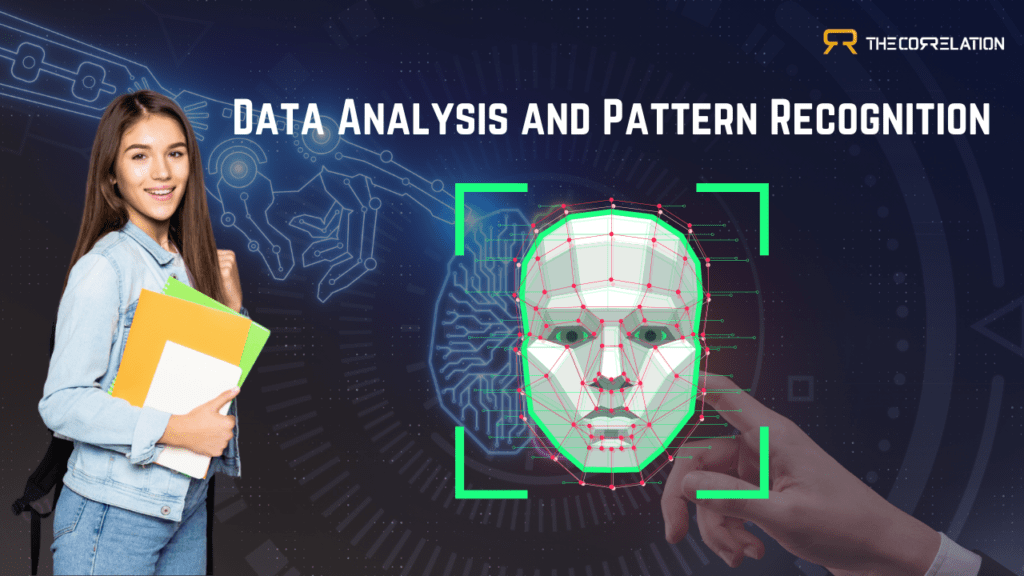Artificial intelligence (AI), particularly machine learning (ML) and deep learning, is revolutionizing several industries, including space weather prediction, healthcare, finance, and more. One crucial area of AI application is data analysis and pattern recognition. Artificial intelligence (AI) is essential for data-driven forecasting and decision-making because it can automatically analyze large datasets, identify trends, and extract insightful information.
Source: What is Pattern Recognition
Key Aspects of Data Analysis and Pattern Recognition Using AI
Handling Large Datasets: Artificial intelligence technologies, including deep learning models, are built to handle and interpret enormous datasets effectively. Data is frequently gathered from a variety of sources, such as sensors, satellite photos, transactional records, and electronic health records, in industries including space weather forecasting, healthcare, and finance. Large datasets may be analyzed far more quickly by AI technologies than by conventional techniques, allowing for immediate insights and forecasts.
Pattern Recognition: Artificial Intelligence is quite good at finding intricate patterns in data, especially when it comes to deep learning methods like recurrent neural networks (RNNs) and convolutional neural networks (CNNs). For example:
CNNs are capable of analyzing Sun photos at various wavelengths to anticipate solar flares or coronal mass ejections (CMEs) in advance.
AI models are used in healthcare to identify patterns in X-ray and MRI images to find abnormalities like tumors or fractures.
In the world of finance, machine learning models may aid in algorithmic trading by spotting patterns in market data that appear before moves in stock prices.
Source: Pattern Recognition and Machine Learning
Real-Time Data Processing: Artificial intelligence (AI) systems can analyze data in real time, which is essential for applications that call for quick decisions or responses. For example, artificial intelligence (AI)–powered space weather monitoring systems offer in-the-moment notifications to safeguard vital infrastructure—such as power grids and satellite communications—from solar flares and geomagnetic storms.
Automating Feature Extraction: Conventional data analysis frequently uses manual feature engineering, in which subject matter experts pinpoint the essential data characteristics that are necessary for forecasting. The amount of manual intervention required may be greatly decreased by using AI algorithms, especially deep learning models, which can automatically learn and extract useful characteristics from raw data. Domains with high-dimensional data, such as image recognition, natural language processing (NLP), and genomics, benefit greatly from this capacity.
Source: Types of Data Analysis
Improving Accuracy and Predictive Power: As more data becomes accessible, AI models that use historical data to forecast future occurrences grow more accurate over time. For instance, AI models combine current data with past weather patterns to forecast weather occurrences more accurately than traditional physics-based models in the field of weather forecasting.
Examples of AI in Data Analysis and Pattern Recognition
Space Weather Prediction: Artificial intelligence (AI) models are used in space weather prediction to detect trends in solar activity that might result in CMEs or solar flares. Space weather may have a detrimental effect on Earth’s technology and infrastructure, but these models can help by providing early warnings by evaluating data from satellites, solar observatories, and other sensors.
Healthcare: By identifying patterns in imaging data, AI-based technologies in the healthcare industry analyze patient data to find early indicators of illnesses like cancer. For instance, AI is frequently able to identify breast cancer-related small alterations in mammograms before a human radiologist does.
Financial Markets: To forecast stock prices or spot fraud tendencies, artificial intelligence (AI) algorithms in finance examine vast amounts of transactional data, news feeds, and market movements. These models can adjust to shifting market conditions and gradually increase their performance by constantly learning from fresh data.
Source: Pattern Recognition Applications
Artificial intelligence (AI) has strong capabilities for processing enormous information, identifying intricate patterns, and producing precise forecasts in a variety of domains through data analysis and pattern identification. From space exploration to healthcare and banking, this automation and improvement of predictive capacities lead to better results, early warnings, and more effective decision-making. It is anticipated that as AI technology develops, its uses in pattern recognition and data analysis will grow, opening up new avenues for investigation and opportunity.


